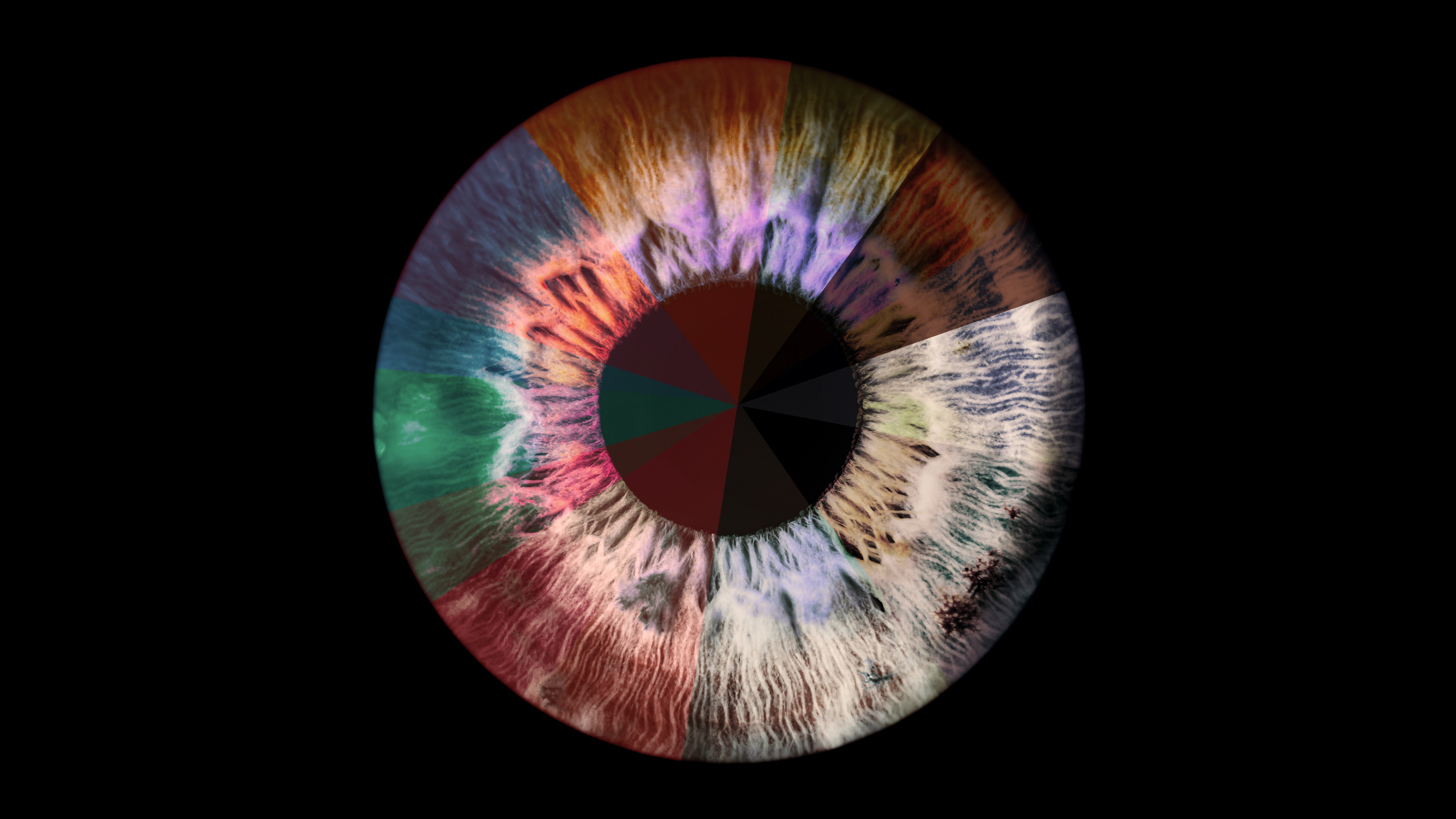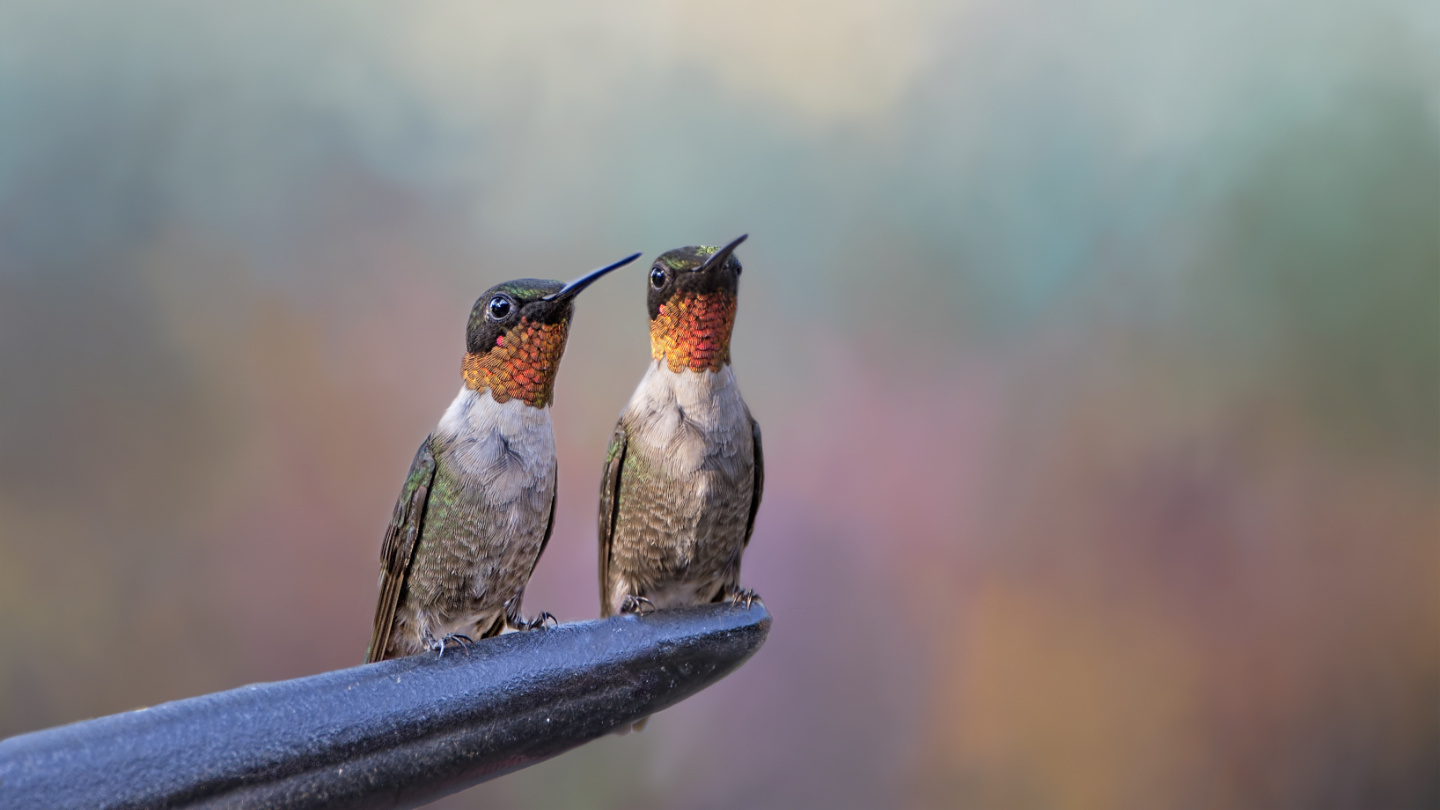Hues of our own: How we perceive color

Photo by JD Weiher on Unsplash
Each of us lives in our own multi-colored universe. And there’s scientific proof of it.
I’m basking inside the sun. It’s hot and stuffy – and that’s putting it lightly. Everything around me is bathed in a storm of UV- and X-rays, masses of plasma roll all around, white-hot from nuclear fusion. The temperature is two million degrees Celsius, but the gas is almost a proper gas by now, its density has dropped to bearable fractions of a kilo per millilitre – not like deeper inside, on the edge of the solar core, where a millilitre of gas compressed in the gravitational vice weighs over 50 kilograms and spits gamma rays in all directions.
My photon (more on why it’s mine later) has spent about 100,000 years arduously crawling through the sun’s radiation zone. For millennia it would disappear, having collided with atoms of scorching gas, only to be reborn again a second later – and so on, over and over again. Now it’s close to the photosphere, the external layer of the sun, the one that appears like the blinding surface of the star when it’s seen from Earth. Ah, here it comes, just squeezing through that border now. After its thousands-of-years journey through the inside of the star, it breaks away from the sun. It flies off from the surface at a dizzying speed of almost 300,000 km/s. Alongside it go the billion trillion trillion trillion other photons produced every second by the sun. There’s no point even trying to imagine that kind of number, our brains aren’t used to conceiving of so many powers of ten. And besides, what I’m interested in is that single specific photon and what it will do for me. In eight minutes time, having crossed the 150 million kilometres of frozen cosmic vacuum that separate the sun from the Earth, it will cross into Earth’s atmosphere. Unphased by anything, in just a fraction of a fraction of a second, it’ll fly through the mass of air, something that we humans only managed to do by building steel machines and jet engines. And there the photon will make color.
The butterfly effect
Just under eight minutes ago, my photon was launched out of the sun. I’m currently in the Low Beskids, somewhere between the former village of Żydowskie and Ożenna. It’s also stuffy, muggy and sticky – there’s a storm on the horizon. The road is hot, the fresh blackness of new asphalt greedily guzzles all the beams of light that land on its surface. Every dozen or so metres, the road is dotted with the body of some long-dead creature. A gallery of now-flattened, previously three-dimensional amphibian and insect beings. The widening and resurfacing of the road that cuts right through the heart of the Magura National Park couldn’t pass unnoticed by the local wildlife. In front of me lies another of the new road’s victims. It is more recent, a cloud of butterflies hovers above the sticky remains. Some of them just love to suck the bitter juice from the decaying carcass. Perhaps that’s why Death in Jacek Malczewski’s art has the wings of a butterfly?
I come closer, one of the butterflies is bigger than the others. It’s a lesser purple emperor – I recognize the characteristic shape of the white spots on its wing. Sampling the carcass with its proboscis, it turns slightly. I suddenly see its wing from the proper angle – and that’s also when my photon lands. Formed hundreds of thousands of years and eight minutes ago in the centre of a very average star, it strikes the butterfly’s wing, bounces off it and passes through a contractile opening into my eye. There it triggers avalanches and launches machinery that is just as incredible as the solar nuclear fusion that formed the photon. But we’ll come to that in a moment. Because right now, I see a flash of bright, incredibly vivid, intense blue. I see the colour created by the beam of light fired out of the sun and reflected off a butterfly wing, a wing shaped by evolution even before the solar photons now bombarding me were formed.
Collisions
Light is basically a cannonade of extraordinarily small, devilishly fast particles, scraps carrying radiant energy that can collide with other particles. They are photons, like the one we just followed so closely. Collisions often end tragically for photons: if, for instance, we place a thick black curtain in its path, nearly all the photons will get stuck as they strike the material, falling into a thick paste of particles and being completely absorbed by them. Of course, nothing in nature is lost, and energy in particular faces an absolute ban on disappearing, so the photons’ energy doesn’t vanish. At most, the photons become invisible, turn into less interesting thermal radiation photons, or their kicks provoke the particles in the curtain to tremble and do somersaults.
Fortunately (for the world and our psyches), the vast majority of the world is not made up of black velvet curtains. So aside from becoming hopelessly mired in matter, photons have another option: reflection. The fate that awaits a given photon once it collides with a piece of our world depends on that piece of matter itself, but also on how much energy the photon is carrying. Matter often acts as a filter, absorbing only those photons with a certain amount of energy and allowing all others to bounce off and fly onwards.
That’s exactly what happened a moment ago. The photon I was waiting for had such a specific amount of energy (to be precise, just over 2.7 eV) that the butterfly wing didn’t absorb it and allowed it to bounce off and head towards my pupil. Of course, the same thing happened with all the other photons with that amount of energy (though I still have a soft spot for that particular one). So is that colour now? We’d get very different answers to this question depending on whom we asked. A physicist (with disarming concision) would say: “Yes, that’s colour. Now let me get back to discovering the theory of everything.” For physicists, what matter does with light is absolutely sufficient for measuring colour and encapsulating it in a dry number. It’s just as well a neurobiologist is standing next to the physicist. This is his answer:
“Colour starts very simply. A photon lands in your eye. In the blink of an eye, if you’ll pardon the expression, it crosses its dark interior and hits the retina. If it’s lucky, it will hit a very specific part of the retina: one of the tens of millions of photoreceptors that are just waiting for beams of light to strike them. Some of those photoreceptors (known as cones because of their shape) only react more strongly to photons carrying a certain amount of energy. My eye and yours (assuming that we aren’t colour blind) have three types of these cones. The photon we’re tracking was carrying quite a lot of energy, towards the upper limit of what our eyes can see. It also just so happens that it hit a receptor specializing in deciphering that type of high-energy photon. There it dislocated the bent arm of a special particle, strategically placed in the folds of the membranes that fill the receptor. It doesn’t seem like much, just a single particle, but it was completely sufficient for the entire cell to vibrate with excitement, and countless reactions going on inside it as well as the biochemical pathways suddenly received the information: pass this on. In a lightning-fast, extraordinarily effective Chinese whisper, the cone sent news of the photon’s kick onwards, and, like a chain reaction, in silent collisions and separations of electrical impulses, that news travelled to the brain so that the brain could think: ‘Blue!'”
It’s beautiful, isn’t it? While for the physicist, the colour of my lesser purple emperor was obvious from the moment its wings voraciously devoured all the photons except for the ‘blue’ ones, true colourful delight was only possible when that light signal – via many tangled chemical reactions and electrical impulses – reached the brain. And there’s more! Some colours are actually formed in there, too.
Between violet and red
I’ve always been unnerved by pink. What kind of colour is that? Painfully raw, fiery and yet cold at the same time. Static, but energetic. As a matter of fact, it’d be hard to find a colour that provokes such mixed reactions. You either love it or hate it – there’s not much room in the world for pink neutrality. But in terms of its physical basis, pink really is a masterpiece of colour.
Let’s start by saying that pink doesn’t exist. Such a colour should not exist. Look at a rainbow – the sequence of colours that make up white light when you place a prism in its path, a pyramid of transparent glass. Red, orange, yellow, green, blue, indigo, violet. There’s no pink. Among the colours of the rainbow – so-called ‘visible colours’ – we will never find pink, purple, lilac or magenta – these are all so-called ‘extra-spectral colours’. They don’t exist as a single specific wavelength of light, one specific energy load of a photon. We’ll also never see purple or pink if our eyes are only bombarded with photons of a single colour, bearing a single amount of energy. Physically, this means that we can’t build a source of light (such as a laser) that, by producing radiation with a single specific wavelength, will produce pink light. Pinks and purples can only be produced when two cones are stimulated at once – the ones sensitive to high-energy photons (known as blue cones) and those sensitive to red (red cones). The brain adds the rest of the story itself by filling a new colour (a purple or pink one) into the empty space between violet and red, between the opposite ends of the light spectrum.
It’s quite possible that each of us sees these non-spectral colours differently. In the end, in these cases, much more than for other colours, the cooperation of several different cones and the brain is crucially important in creating a colour that formally doesn’t exist as a component of white light. Has our perception of pinks in one way and not another been shaped by the evolution of our species? Indeed, a whole range of flowers and fruits are pink – quickly recognizing and remembering objects of a non-spectral colour could have been key to the life of our anthropoid ancestors. It could have been so essential that it formatted the perception of this ‘impossible’ colour as one of the brightest, clearest colours. When it comes to colours, evolution might have a great deal more to say, precisely by giving the brain absolute power over where and how we perceive colour.
The brain and grey strawberries
There’s a picture of some strawberries in front of me. It has a sea-green glow, as if the strawberries are being lit by a beam of turquoise light. The fruits are dark-red, my brain has no doubt about it. Even if I know that’s physically not true.
Each and every pixel of the strawberry is perfectly grey. Darker or lighter grey, but categorically lacking any red hue. If I cover the picture so that I can only see a part of the strawberry, I see the greyness. But as soon as I uncover the rest of the picture, the strawberry becomes red again.
I feel cheated – all the more so since I’m doing it to myself. The structurally perfect colour-measuring device that is my eyes, is connected to a jelly-like mass that ‘knows better’. In this classic illusion, called the Land effect, and found in many other colour versions, it’s easiest to see how deceptive it can be to treat colour as purely the ‘energeticness’ of photons injected through the pupil into our eye. My brain, receiving signals from my eyes, isn’t simply a dry rapporteur of the given ‘measurement’ of light. Colour is the product of what the eye sees and what the brain decides should be there. The situation described above is an example of what’s known as ‘colour constancy’ – the way in which the brain deals with seeing the same objects in different lights. Thanks to colour constancy, for instance, we can correctly match the colours of objects that are in light or in darkness. It’s a skill – it has to be said – that’s fairly crucial for survival: if our ancestors had treated the colour of fruit in the dark as something completely different to the colour of fruit in sunlight, they might have unnecessarily refrained from eating one or the other. In a world in which eating one apple might save you from starvation, the perception of colour constancy is quite an essential brain superpower. But it clearly cannot cope with unnatural situations like the grey strawberries ‘lit’ in turquoise light. For the brain, grey has no right to be there – so it fills it in with the most ‘sensible’ filler colour: red.
Does that kind of colour – that is, red – actually exist? Let’s add some fuel to this fire. I once carried out an experiment in which I showed a similar illusion to several dozen people. I asked them to show the colour they thought they’d seen (by moving a few colour sliders) on a computer screen, when in fact they had been looking at grey. A degree of fluctuation was to be expected – just because of the imprecise nature of the method used by subjects to indicate the colour. But it turned out that each person saw a completely different ‘red’ in place of the grey, and sometimes it wasn’t even red but a certain shade of violet or purple. Does this mean that in a given unequivocal physical situation, many colours exist – as many as the number of people looking at it? Have a think, look around you – everyone you see might well have colourful worlds of their own, private funfairs of multicoloured delights that only they know.
That’s quite a terrifying view of the world, but also a fascinating one. Because it suddenly turns out that mocking men’s colour illiteracy isn’t really very fair. And the widespread belief that women are better at distinguishing between the slightest shades of colour isn’t really defensible. Because it’s quite possible that we all have our own colourful cosmoses. We only agree on what to name the colours (though here we have ample room to show off our talents, and the cultural evolution of this terminology has also confused matters, but that’s another story). It’s not impossible that looking into the head of a random person and seeing the world through their tinted glasses would be a similar shock for the average person as seeing reality through the eyes of someone who’s colour blind. We take too much of our visual perception of the world around us as a physical certainty – but colour isn’t just about physics. It’s a dance: of photons, chemical particles, electrical impulses, turbulent cytoplasms and ancient whims of the brain. There are simply too many elements involved for it to work in an identical way for each of us…
An afterimage that’s lighter than white
Do a simple experiment. Draw a bright red square on a piece of white paper, and draw a small black spot in the middle. Then stare at that black spot trying not to move your eyes. Take a long time – 30-40 seconds is best. Next, shift your gaze to a brightly lit white piece of paper. You’ll see a new colour in the middle of it! A weird colour, as if glowing ‘from inside’. It’ll probably be a light bluey-green or turquoise. What’s interesting – you’ll be convinced that the colour you’re seeing is lighter than white, even though that’s impossible.
What you have seen is a commonly observed phenomenon, when one of the three coloured cones in the eye ‘gets tired’. Looking at the red shape, you exhausted the cones that see mostly red light. That exhaustion lasts a few seconds, maybe a little more – enough for the temporary lack of perception of that colour to leave a shape on the surface of the white paper that’s coloured with ‘a lack of red’. For our brain, it’s the result of a reaction of the two remaining types of cones; we see something between a green and turquoise colour. Interestingly, this colour arises from the lack of a given colour, so the complementary visible colours are artificially intensified and seem much brighter – indeed brighter than the white paper on which they appear. The impression of this colour arises only in the eye and the brain, no source of light could produce such a hue.
Translated from the Polish by Zosia Krasodomska-Jones
Reprinted with permission of Przekrój. Read the original article.





